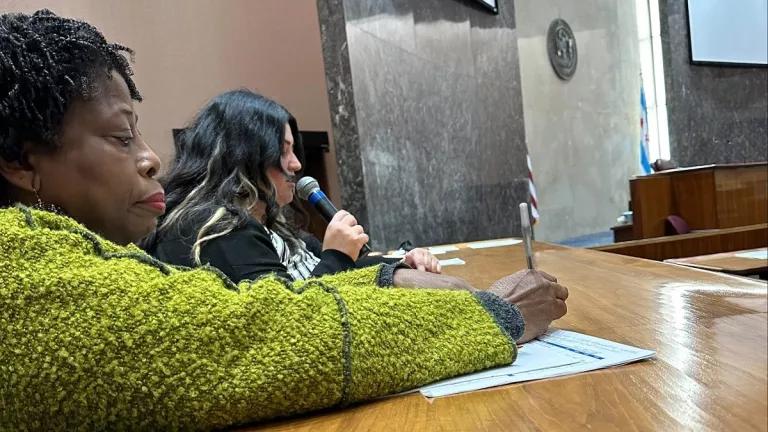Minneapolis Acts to Fight the Human Cost of Climate Change
Middle of the Country, But Not Middle of the Pack
We often expect news of innovative environmental policies to come out of cities in California, but Minneapolis is emerging as a national leader and proving that every city, in every part of the country, can and should push for bold climate action.
The Minneapolis City Council’s environment committee voted on December 2 to declare a climate emergency, citing the need for “a massive-scale mobilization to halt, reverse, and address the consequences and causes of climate change.” The move aligns the Midwestern city with hundreds of other local governments around the globe—including New York, London, and Sydney—that have recently made similar declarations and the more than 11,000 scientists who signed “World Scientists’ Warning of a Climate Emergency” in November.
A declaration acknowledging the problem is one thing; meaningful action to tackle it is another—and the City of Lakes is proving that it can both talk the talk and walk the walk. Minneapolis is making moves in a number of critical areas by putting a price on carbon emissions, developing building efficiency resolutions, and installing solar arrays. The city is connecting the dots between high energy bills and costly commutes as cost of living concerns, and working to reduce the household energy burden to improve housing affordability and combat transportation costs with better transit options.
The Social Cost of Carbon
On the heels of the December 2 climate emergency declaration, the council committee established a social cost of carbon (SCC) for use in climate and energy policy. The SCC is a metric frequently used by international governments, federal agencies, and increasingly, states (including Minnesota). Its purpose is to estimate, in dollars, the long-term economic damage that will be caused by emitting one ton of carbon dioxide into the atmosphere. Climate damages, in economist’ speak, will be hardest on vulnerable people who lack resources to prevent, avoid and recover from the impacts. This estimate can then help decision makers evaluate and craft policies that affect greenhouse gas emissions and calculate how much society stands to benefit from reducing emissions.
In the United States, experts from a federal Interagency Working Group developed the SCC based on the latest available science and economic data. Unsurprisingly, the Trump administration has recently significantly weakened the SCC—but Minneapolis is helping to prove that cities can take up the mantle when federal leadership fails us.
Minneapolis voted to use the same values adopted by the Minnesota Public Utilities Commission at the state level, which works out to $42.46 per ton in 2020 and will increase annually. The city will also consider even higher values, such as the International Monetary Fund’s recently suggested $75 per ton.
Now that the SCC has been established, the Minneapolis City Council will determine exactly how the metric will be used in city policies when it convenes in 2020.
Setting Sustainable Building Policy
Nearly three-quarters of all greenhouse gas emissions in Minneapolis come from buildings. In order for the city to meet its ambitious climate action goals of reducing its carbon emissions 30% by 2025 and 80% by 2050, it makes good sense to prioritize developing a sustainable building policy.
The city just approved a resolution directing staff to develop environmental performance standards for city-financed multifamily housing projects, one to three-unit housing, economic development projects, and city-owned or leased buildings.
The resolution points to Minneapolis’s fellow American Cities Climate Challenge (ACCC) city and “twin,” St. Paul, as a source of inspiration—St. Paul has had a successful sustainable building policy in place for the past decade. With support from the ACCC, the Minneapolis City Council will introduce the specifics of the policy in mid-2020.
A Vast Array of Solar Projects
As an ACCC city, Minneapolis has set an ambitious goal to install 200 new solar array projects. And already, they’ve nearly hit the mark—a full year ahead of schedule. Not simply working to meet their ambitious 100% clean energy goals, the city is striving to build a significant portion of new solar within city limits to deliver cost savings to those bearing the greatest energy burden.
In particular, the city recognizes that the benefits of solar include lowering energy costs and could help increase housing affordability and equity. The goal is to build 20% of the arrays within the city’s “Green Zones,” an initiative to transform the communities most impacted by pollution into healthy, sustainable neighborhoods.
So far, the city has built 78 solar projects within Green Zones, but there’s room for more. That means offering compelling financial incentives to building owners in these areas. ACCC partner Sylver Consulting is working to help the city plan further innovations to improve this model and reach its equity goals.




